Don't wanna be here? Send us removal request.
Text
WHAT IS A FABRIC SHAVER?
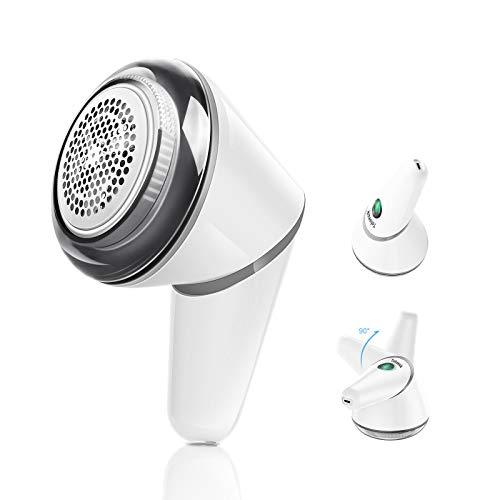
Fabric shavers, also known as lint removers or fabric depillars, are handy devices designed to remove fuzz, lint, and pills from various fabrics shavers, thereby revitalizing the appearance of clothing and fabrics. They are essential tools for maintaining the quality and longevity of your garments.
How Does a Fabric Shaver Work?
Understanding the Mechanism
Fabric shavers operate through a simple yet effective mechanism. They feature rotating blades or razors that trim away excess fibers and lint from the surface of fabrics.
Components of a Fabric Shaver
A typical fabric shaver consists of a motor, a blade or razor assembly, a collection compartment for removed lint, and a handle for easy maneuverability.
Benefits of Using a Fabric Shaver
Fabric shavers offer several benefits, including:
Prolongs the Life of Clothing
By removing unsightly pills and fuzz, fabric shavers help extend the lifespan of your clothing, keeping them looking newer for longer.
Restores Fabric Texture
Regular use of a fabric shaver restores the original texture of fabrics, making them feel smoother and more comfortable against the skin.
Saves Money on Clothing Replacement
Instead of replacing worn-out clothing, investing in a fabric shaver allows you to salvage garments, saving you money in the long run.
Types of Fabrics Suitable for Fabric Shavers
Fabric shavers are suitable for a wide range of fabrics, including:
Wool
Cotton
Polyester
Acrylic
And many others
How to Use a Fabric Shaver Properly
Preparation
Before using a fabric shaver, ensure that the fabric is clean and free of any surface dirt or debris.
Operating the Fabric Shaver
Simply glide the fabric shaver over the surface of the garment in a gentle, circular motion, allowing the blades to trim away lint and pills.
Safety Precautions
Exercise caution when using a fabric shaver near delicate fabrics or intricate designs to avoid accidental damage.
Tips for Choosing the Right Fabric Shaver
When selecting a fabric shaver, consider the following factors:
Power Source
Choose between battery-operated or corded fabric shavers based on your preferences and convenience.
Blade Quality
Opt for fabric shavers with high-quality blades that can effectively remove lint without damaging the fabric.
Size and Portability
Select a compact and lightweight fabric shaver for easy storage and portability.
Additional Features
Look for features such as adjustable settings, ergonomic designs, and detachable lint compartments for added convenience.
Maintenance and Care of Fabric Shavers
To ensure optimal performance and longevity, follow these maintenance tips:
Cleaning
Regularly clean the blade assembly and lint compartment of the fabric shaver to prevent clogging and maintain efficiency.
Blade Replacement
Replace the blades of the fabric shaver periodically to maintain sharpness and effectiveness.
Storage
Store the fabric shaver in a cool, dry place away from moisture and direct sunlight to prevent damage.
Common Mistakes to Avoid When Using a Fabric Shaver
To avoid damaging your garments or the fabric shaver itself, steer clear of these common mistakes:
Using on Delicate Fabrics
Avoid using a fabric shaver on delicate fabrics such as silk or lace, as the blades may cause irreparable damage.
Not Cleaning the Shaver Regularly
Failure to clean the fabric shaver regularly can lead to reduced performance and potential damage to the device.
Applying Excessive Pressure
Use a gentle touch when operating the fabric shaver to prevent excessive wear and tear on the fabric.
Comparing Fabric Shavers with Alternative Methods
While fabric shavers offer an efficient solution for removing lint and pills, it's essential to consider alternative methods such as:
Lint Rollers
Scissors
Manual Depilling Tools
FAQs About Fabric Shavers
What is the purpose of a fabric shaver?
Fabric shavers are used to remove lint, fuzz, and pills from clothing and fabrics, restoring their appearance and texture.
Can fabric shavers damage clothing?
When used properly, fabric shavers should not damage clothing. However, it's essential to exercise caution, especially with delicate fabrics.
How often should I use a fabric shaver?
The frequency of fabric shaver usage depends on the extent of lint and pills on your garments. It's advisable to use the fabric shaver as needed to maintain the appearance of your clothing.
Can fabric shavers be used on furniture?
Fabric shavers are primarily designed for use on clothing and fabrics. While they may be suitable for some upholstery fabrics, it's essential to test the fabric shaver on a small, inconspicuous area first.
Are fabric shavers safe to use on delicate fabrics?
Fabric shavers can be used on delicate fabrics such as wool or cashmere, but it's crucial to exercise caution and use the lowest setting to avoid damage.
Conclusion
Fabric shavers are indispensable tools for maintaining the appearance and quality of clothing and fabrics. By removing lint, fuzz, and pills, fabric shavers help prolong the lifespan of garments, saving you money on clothing replacement. With proper usage and maintenance, fabric shavers can keep your wardrobe looking fresh and stylish for years to come.
0 notes
Text
FABRIC PILLING: CAUSES, PREVENTION, AND SOLUTIONS
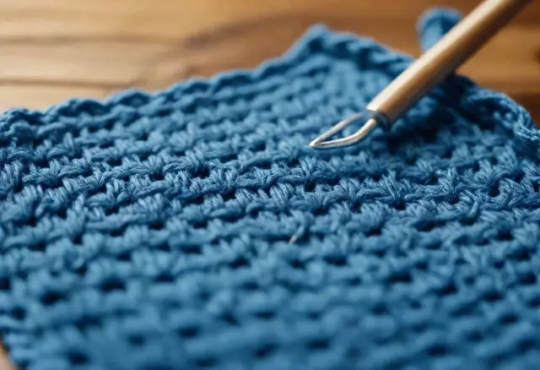
Fabric pilling is a common issue that many of us encounter with our clothing and household textiles. It occurs when fibers break or loosen and form small, fuzzy balls on the fabric surface. While it can be frustrating, understanding the causes and knowing how to prevent and address fabric pilling can help prolong the lifespan of your garments and linens.
Introduction to Fabric Pilling
What is fabric pilling?
Fabric pilling refers to the formation of small, tangled balls of fiber on the surface of a fabric. These pills are often more noticeable on areas of the fabric that experience friction, such as underarms, cuffs, and seat areas.
Why does fabric pill?
Fabric pilling occurs due to the natural wear and tear that fabrics experience over time. Factors such as friction, low-quality fibers, washing and drying techniques, and exposure to certain chemicals can all contribute to the formation of pills on fabric surfaces.
Causes of Fabric Pilling
Low-quality fibers
Fabrics made from low-quality fibers are more prone to pilling. Shorter fibers tend to break more easily, leading to the formation of pills.
Friction
Friction from everyday activities such as rubbing against furniture, carrying bags, or even body movement can cause fibers to break and form pills on fabric surfaces.
Washing and drying techniques
Aggressive washing and drying techniques, such as using high heat or harsh detergents, can weaken fibers and contribute to pilling.
Chemical exposure
Exposure to certain chemicals, such as bleach or chlorine, can weaken fibers and make them more susceptible to pilling.
Types of Fabrics Prone to Pilling
Natural fibers
Fabrics such as wool and cotton, which are made from natural fibers, are more prone to pilling due to their inherent characteristics.
Synthetic fibers
Synthetic fabrics like polyester and nylon are also prone to pilling, especially if they contain low-quality fibers or are exposed to high levels of friction.
Prevention Methods
Choosing high-quality fabrics
Investing in garments and linens made from high-quality fibers can help reduce the likelihood of pilling.
Proper garment care
Following care instructions on garment labels, such as washing in cold water and air drying, can help preserve the integrity of the fabric and prevent pilling.
Using fabric softeners and conditioners
Fabric softeners and conditioners can help lubricate fibers and reduce friction, minimizing the chances of pilling.
Reducing friction
Taking precautions to reduce friction, such as wearing slipcovers on furniture or using garment bags when washing delicate items, can help prevent fabric pilling.
Solutions for Removing Fabric Pills
Manual removal
Gently removing pills by hand using a fabric comb or razor can help restore the appearance of the fabric.
Fabric shavers
Electric fabric shavers are designed to remove pills quickly and efficiently from fabric surfaces without damaging the fabric itself.
Commercial fabric de-pilling products
There are various de-pilling products available on the market, such as lint rollers and fabric brushes, that can effectively remove pills from fabric surfaces.
Conclusion
Fabric pilling is a common issue that can detract from the appearance and longevity of garments and household textiles. By understanding the causes of pilling and implementing preventive measures, such as choosing high-quality fabrics and proper garment care, it is possible to minimize pilling and prolong the lifespan of your textiles. Additionally, there are various solutions available for removing fabric pills and restoring the appearance of fabrics.
FAQs
How can I prevent fabric pilling on my clothing?
Choose high-quality fabrics, follow care instructions, and reduce friction during wear and washing.
Are there any natural remedies for removing fabric pills?
Yes, methods such as using a pumice stone or fine sandpaper can be effective for manual removal.
Can fabric pilling be completely eliminated?
While it may not be possible to completely eliminate fabric pilling, preventive measures can help reduce its occurrence.
Is fabric pilling a sign of poor quality?
Not necessarily. Even high-quality fabrics can pill over time due to wear and tear.
Are there any special laundry techniques to prevent pilling?
Washing garments inside out, using gentle cycles, and avoiding harsh detergents can help prevent pilling during laundering.
0 notes
Text
WHAT DOES A FABRIC SHAVER DO?
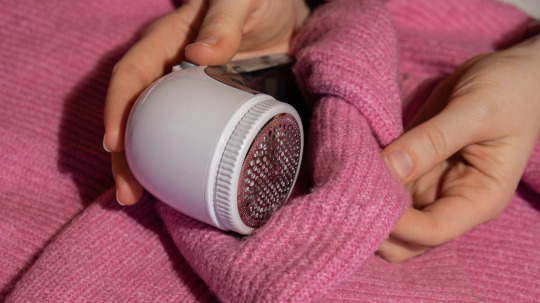
Fabric shavers are ingenious little tools designed to restore the appearance of clothing and fabrics by removing lint, fuzz, and unsightly pills. These handy gadgets work wonders on various materials, from wool and cotton to upholstery and blankets. But what does a fabric shaver do, and why should every household have one?
How Does a Fabric Shaver Work?
Fabric shavers operate on a simple yet effective mechanism. They typically consist of a motor and rotating blades enclosed in a protective housing. As the blades rotate, they catch and cut off protruding fibers, lint, and pills from the fabric's surface, leaving it smooth and rejuvenated.
Blades and Motor
The quality and efficiency of a fabric shaver largely depend on the sharpness of its blades and the power of its motor. High-quality shavers feature precision blades that glide effortlessly over fabric, while powerful motors ensure quick and thorough removal of lint and pills.
Removing Lint and Pills
Lint refers to loose fibers that accumulate on clothing, especially after washing and drying. Pills, on the other hand, are small balls of fibers that form on fabric surfaces due to friction and wear. Fabric shavers work by shearing off these unwanted particles, restoring the fabric's appearance and texture.
Benefits of Using a Fabric Shaver
Investing in a fabric shaver offers a multitude of benefits for both your wardrobe and household items.
Prolongs Garment Lifespan
Regular use of a fabric shaver helps extend the lifespan of your clothing by preventing the formation of pills and maintaining the fabric's integrity. By removing excess lint and fuzz, fabric shavers help garments look newer for longer.
Restores Fabric Appearance
Whether it's a favorite sweater or a cozy blanket, fabric shavers can work wonders in revitalizing worn-out fabrics. By eliminating unsightly pills and fuzz, they restore the fabric's original appearance and softness, giving it a fresh lease on life.
Saves Money
Instead of replacing damaged or worn-out clothing, investing in a fabric shaver can save you money in the long run. By restoring the appearance of garments, you can prolong their usability and reduce the need for frequent replacements.
Types of Fabric Shavers
Fabric shavers come in two main types: manual and electric.
Manual Fabric Shavers
Manual fabric shavers require hand-operated movement to remove lint and pills from fabric surfaces. While they may require more effort than electric shavers, they are portable and suitable for delicate fabrics.
Electric Fabric Shavers
Electric fabric shavers feature motorized blades that quickly and efficiently remove lint and pills with minimal effort. They are ideal for larger fabrics and heavy-duty use, making them a popular choice for households and professional cleaners.
Choosing the Right Fabric Shaver
When selecting a fabric shaver, consider factors such as blade quality, motor power, ergonomics, and price. Popular brands such as Philips, Conair, and Remington offer a wide range of fabric shavers to suit different needs and budgets.
How to Use a Fabric Shaver
Using a fabric shaver is simple and straightforward, but it's essential to follow a few basic steps to ensure optimal results.
Preparation
Before using a fabric shaver, ensure that the fabric is clean and dry. Remove any excess lint or debris from the surface using a lint brush or adhesive roller.
Shaving Process
Hold the fabric taut and run the shaver gently over the surface in a back-and-forth motion. Avoid pressing too hard to prevent damage to the fabric. Continue shaving until the desired results are achieved.
Safety Precautions
Exercise caution when using a fabric shaver near delicate fabrics or embellishments. Avoid shaving over seams, buttons, or zippers, as this may cause damage. Always unplug electric shavers before cleaning or replacing blades.
Maintenance and Care
To ensure the longevity and performance of your fabric shaver, it's essential to clean and maintain it regularly.
Cleaning
After each use, remove the detachable lint container and empty it to prevent clogging. Use a small brush or cloth to remove any lint or debris from the blades and housing. For electric shavers, follow the manufacturer's instructions for cleaning and maintenance.
Blade Replacement
Over time, the blades of a fabric shaver may become dull or damaged, affecting its performance. To maintain optimal efficiency, consider replacing the blades periodically or as needed.
Fabric Shaver FAQs
How often should I use a fabric shaver?
It depends on the frequency of use and the condition of your clothing. As a general rule, use the fabric shaver as needed to remove lint and pills and maintain the fabric's appearance.
Can fabric shavers damage clothing?
When used correctly, fabric shavers should not damage clothing. However, it's essential to follow the manufacturer's instructions and exercise caution, especially when shaving delicate fabrics or near seams and embellishments.
Are fabric shavers safe for delicate fabrics?
Yes, many fabric shavers are safe for use on delicate fabrics such as wool, cashmere, and silk. However, it's advisable to test the shaver on a small, inconspicuous area first to ensure compatibility.
Can fabric shavers be used on furniture?
Fabric shavers are primarily designed for use on clothing and textiles. While they may be suitable for certain types of upholstery, it's essential to exercise caution and test the shaver on a small area first to avoid damage.
Do fabric shavers work on all types of fabric?
Fabric shavers are generally effective on most types of fabric, including cotton, wool, polyester, and blends. However, results may vary depending on the fabric's texture and thickness.
Conclusion
In conclusion, a fabric shaver is a versatile and indispensable tool for maintaining the appearance and longevity of clothing and fabrics. Whether you're looking to remove lint, fuzz, or pills, investing in a high-quality fabric shaver can help you achieve professional results with ease
0 notes
Text
HOW TO REMOVE LINT FROM YOUR WASHING MACHINE LINT FILTER
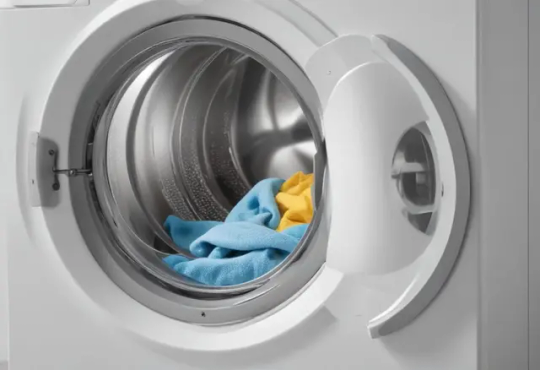
Washing machines are essential appliances in any household, making laundry tasks much more manageable. However, to ensure optimal performance and longevity, it's crucial to maintain various components, including the lint filter. Lint, consisting of small fibers and debris from clothing, can accumulate in the filter over time, leading to reduced efficiency and potential damage to your washing machine. In this article, we'll delve into the importance of cleaning your washing machine lint filter regularly and provide a step-by-step guide on how to do it effectively.
Introduction to Washing Machine Lint Filters
Lint filters are designed to trap lint and other debris from your laundry during the washing cycle, preventing it from clogging the drain or getting recirculated onto your clothes. Most modern washing machines come equipped with built-in lint filters, typically located near the agitator or inside the front panel.
Importance of Keeping the Lint Filter Clean
Maintaining a clean lint filter is essential for several reasons. Firstly, a clogged lint filter can obstruct water flow, leading to drainage issues and potential water damage to your washing machine. Secondly, accumulated lint can create a breeding ground for mold and bacteria, causing foul odors and compromising the hygiene of your laundry. Moreover, a clean lint filter ensures efficient water circulation and optimal washing performance, resulting in cleaner clothes with every cycle.
Signs That the Lint Filter Needs Cleaning
It's essential to be aware of the signs indicating that your washing machine lint filter needs cleaning. Some common indicators include:
Slow drainage or water pooling in the washing machine drum
Foul odors emanating from the washing machine
Visible lint or debris accumulation around the lint filter area
Reduced washing machine efficiency and performance
Step-by-Step Guide on How to Remove Lint from Your Washing Machine Lint Filter
Gathering Necessary Tools
Before you begin, gather the following tools:
Screwdriver (if necessary)
Cleaning brush or old toothbrush
Mild detergent or vinegar solution
Clean, dry cloth
Locating the Lint Filter
Refer to your washing machine's user manual to locate the lint filter. In most cases, it can be found near the agitator or inside the front panel.
Removing the Lint Filter
Carefully remove the lint filter from its housing. Depending on your washing machine model, you may need to use a screwdriver to detach any screws securing the lint filter in place.
Cleaning the Lint Filter
Once removed, inspect the lint filter for any visible lint or debris. Use a cleaning brush or old toothbrush to gently scrub away the buildup. For stubborn residue, soak the lint filter in a mild detergent or vinegar solution for a few minutes before rinsing it thoroughly with water.
Reinstalling the Lint Filter
After cleaning, ensure that the lint filter is completely dry before reinstalling it in its housing. Secure any screws or fasteners if necessary, then close the front panel or lid of your washing machine.
Tips for Maintaining a Clean Lint Filter
To prevent lint buildup and maintain optimal washing machine performance, consider the following tips:
Clean the lint filter after every few laundry cycles, especially if you notice signs of accumulation.
Remove any lint or debris trapped in the washing machine drum or around the door seal regularly.
Use mesh laundry bags to contain lint from delicate fabrics and prevent it from entering the washing machine.
Avoid overloading the washing machine, as this can lead to excessive lint generation and poor drainage.
Common Mistakes to Avoid When Cleaning the Lint Filter
When cleaning your washing machine lint filter, avoid the following mistakes:
Using harsh chemicals or abrasive cleaners, as they can damage the filter or washing machine components.
Neglecting to dry the lint filter thoroughly before reinstalling it, which can lead to mold or mildew growth.
Skipping regular maintenance checks, as this can result in costly repairs or premature washing machine failure.
Other Areas to Check for Lint Buildup in the Washing Machine
In addition to the lint filter, it's essential to inspect other areas of your washing machine for lint buildup, including:
Drain hoses and pipes
Pump filter (if accessible)
Washing machine drum and agitator
Door seal and gasket
Importance of Regular Maintenance for Efficient Washing Machine Performance
Regular maintenance, including cleaning the lint filter and inspecting for lint buildup, is crucial for ensuring efficient washing machine performance and prolonging its lifespan. By incorporating simple maintenance tasks into your laundry routine, you can avoid costly repairs and enjoy consistently clean and fresh-smelling laundry.
Eco-Friendly Ways to Dispose of Lint
Rather than tossing lint in the trash, consider eco-friendly disposal methods such as:
Composting: Lint composed of natural fibers such as cotton or wool can be added to your compost bin as a source of organic material.
Gardening: Use lint as mulch around plants or as nesting material for birds.
Crafting: Get creative and repurpose lint for various DIY projects such as making paper, crafting stuffed toys, or creating fire starters.
FAQs about Washing Machine Lint Filters
How often should I clean my washing machine lint filter? It's recommended to clean the lint filter after every few laundry cycles or whenever you notice signs of lint accumulation.
Can I wash the lint filter in the dishwasher? It's not advisable to wash the lint filter in the dishwasher, as the hot water and detergent may damage the filter. Instead, hand wash it using mild detergent and water.
Is it necessary to clean the lint filter if I use a dryer? Yes, it's still necessary to clean the lint filter in your washing machine, even if you use a dryer. This helps prevent lint buildup in the washing machine and ensures efficient performance.
Can a clogged lint filter damage my washing machine? Yes, a clogged lint filter can restrict water flow and cause drainage issues, leading to potential damage to your washing machine over time.
1 note
·
View note
Text
HOW TO REMOVE LINT FROM CLOTHES: THE ULTIMATE GUIDE
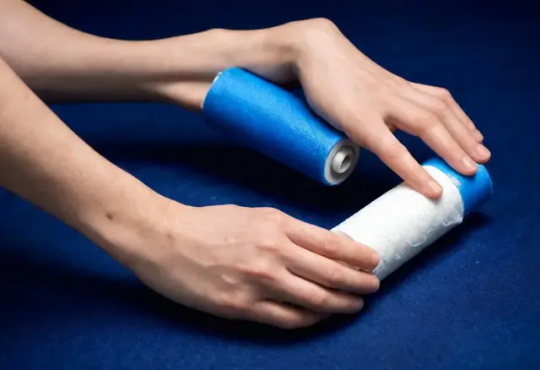
Lint, the tiny fabric fibers that collect on clothing, can be a nuisance, making your favorite garments look worn out and unkempt. However, with the right tools and techniques, you can easily banish lint and restore your clothes to their former glory. In this comprehensive guide, we'll explore everything you need to know about removing lint from clothes effectively.
Understanding Lint
What is lint?
Lint is comprised of tiny fibers shed from fabrics during wear and washing. These fibers become tangled and accumulate on clothing, creating the fuzzy, undesirable appearance known as lint.
Why does lint accumulate on clothes?
Lint accumulates due to friction and agitation during daily wear, as well as during the washing and drying process. Fabrics with loose weaves or those prone to shedding, such as cotton and wool, are more susceptible to lint buildup.
Tools and Equipment for Lint Removal
Removing lint from clothes is made easier with the right tools and equipment. Here are some essential items you'll need:
Lint rollers: Adhesive rollers designed to pick up lint and pet hair from clothing.
Fabric shavers: Battery-operated devices that gently remove lint and pills from fabric surfaces.
Lint brushes: Brushes with fine bristles that effectively lift lint from clothing.
Sticky tape: A simple yet effective method for quickly removing lint from clothes in a pinch.
DIY Methods for Removing Lint
If you don't have specialized tools on hand, there are several DIY methods you can try:
Using a razor: Gently glide a razor over the surface of the fabric to remove lint and pills.
Using a pumice stone: Rub a pumice stone lightly over the fabric to lift away lint and restore smoothness.
Using rubber gloves: Dampen rubber gloves and run them over the fabric to attract and remove lint.
Tips for Preventing Lint
Preventing lint buildup can help keep your clothes looking fresh and new. Consider the following tips:
Sorting clothes before washing: Separate lint-prone fabrics from those less likely to shed to minimize lint transfer.
Washing delicate items separately: Delicate fabrics like wool and silk should be washed separately to prevent damage and lint accumulation.
Using fabric softeners: Fabric softeners can help reduce static cling and minimize lint buildup in the dryer.
Regular cleaning of the lint trap: Clean your dryer's lint trap after every use to prevent lint from accumulating on clothes during drying cycles.
0 notes
Text
HOW TO MAKE YOUR CLOTHES LAST LONGER

Introduction
In a world where fast fashion dominates, the idea of making our clothes last longer might seem counterintuitive. However, extending the lifespan of our garments not only benefits our wallets but also has a positive impact on the environment. Let's explore some practical tips on how to make your clothes last longer.
Choose Quality Fabrics
Investing in quality fabrics is the first step towards ensuring longevity in your wardrobe. Quality fabrics are more durable and better withstand the test of time. When shopping, pay attention to fabric composition and construction. Opt for natural fibers like cotton, wool, and silk, which tend to be more resilient.
Proper Washing and Drying Techniques
Following proper washing and drying techniques is crucial for preserving the integrity of your clothes. Always read and adhere to care labels to avoid damaging delicate fabrics. Use gentle detergents, wash with cold water when possible, and avoid overloading the washing machine. Additionally, air drying is gentler on fabrics compared to machine drying, so whenever feasible, opt for air drying.
Storage Solutions
Proper storage is key to preventing damage to your clothes. Learn proper folding techniques to minimize wrinkles and creases. Consider hanging delicate garments to maintain their shape and structure. Invest in storage solutions like garment bags and cedar blocks to protect your clothes from pests and moisture.
Repair Instead of Replace
Instead of discarding damaged clothing, consider repairing it. Basic sewing skills are invaluable for mending small tears and loose seams. Learn simple patching techniques to extend the life of your favorite garments. For more complex repairs, don't hesitate to seek assistance from a professional tailor.
Rotate Your Wardrobe
Rotating your wardrobe not only prevents excessive wear and tear on individual garments but also allows you to fully utilize your clothing collection. Implement a rotation system based on seasonality or occasion to ensure equal wear across all pieces.
Invest in Clothing Care Products
Using appropriate detergents and fabric softeners can significantly impact the longevity of your clothes. Choose products specifically formulated for different fabric types to ensure optimal care. Avoid harsh chemicals that can weaken fibers and cause premature wear.
Avoid Overwashing
Overwashing can contribute to fabric deterioration and fading. Instead of washing after every wear, consider spot cleaning or airing out clothes to maintain freshness. Reserve full wash cycles for garments that truly require it, prolonging the time between washes.
Handle Stains Promptly
Addressing stains promptly can prevent them from setting and becoming more difficult to remove. Keep stain removal products on hand and treat stains as soon as they occur. Remember to test any cleaning solution on a small, inconspicuous area first to avoid further damage.
Tailoring for Longevity
Proper fit is essential for ensuring comfort and longevity in your clothing. Invest in alterations to tailor garments to your body for a perfect fit. Addressing issues like hemming, adjusting waistlines, and resizing sleeves can breathe new life into old favorites.
Mindful Wearing and Usage
Be mindful of how you wear and use your clothes to minimize wear and tear. Avoid unnecessary strain on seams and buttons by dressing and undressing with care. Rotate the use of handbags and accessories to prevent excessive rubbing and friction.
Store Seasonal Clothes Properly
When transitioning between seasons, store seasonal clothes properly to protect them from damage. Clean and properly fold or hang clothes before storing them in a cool, dry place. Consider using garment bags or vacuum-sealed storage containers for added protection.
Regular Maintenance Checks
Perform regular maintenance checks on your clothes to catch and address issues before they worsen. Inspect garments for loose threads, missing buttons, and signs of wear. Addressing minor issues promptly can prevent them from escalating into larger problems.
Environmental Impact of Fast Fashion
The fashion industry's reliance on fast fashion contributes to environmental degradation through excessive waste and pollution. By making our clothes last longer, we can reduce our consumption and minimize our carbon footprint. Opting for quality over quantity and embracing sustainable practices can help mitigate the environmental impact of fashion.
Conclusion
Making your clothes last longer is not only a practical approach to managing your wardrobe but also a sustainable choice with positive implications for the environment. By implementing simple strategies like choosing quality fabrics, practicing proper care techniques, and investing in repairs when necessary, you can extend the lifespan of your garments and reduce your ecological footprint.
Unique FAQs
How often should I wash my clothes to make them last longer?
Washing frequency depends on factors like fabric type, wear intensity, and personal preference. Generally, washing after every few wears or when garments are visibly soiled is sufficient.
Can I use homemade remedies for stain removal?
Yes, homemade stain removal remedies like vinegar, baking soda, and lemon juice can be effective for treating common stains. However, always test on a small area first to ensure compatibility with the fabric.
What should I do if I notice a moth infestation in my closet?
If you discover a moth infestation, immediately remove all affected clothing and thoroughly clean your closet. Consider using natural moth repellents like cedar blocks or lavender sachets to prevent future infestations.
Is it worth investing in professional alterations for my clothes?
Professional alterations can significantly improve
1 note
·
View note